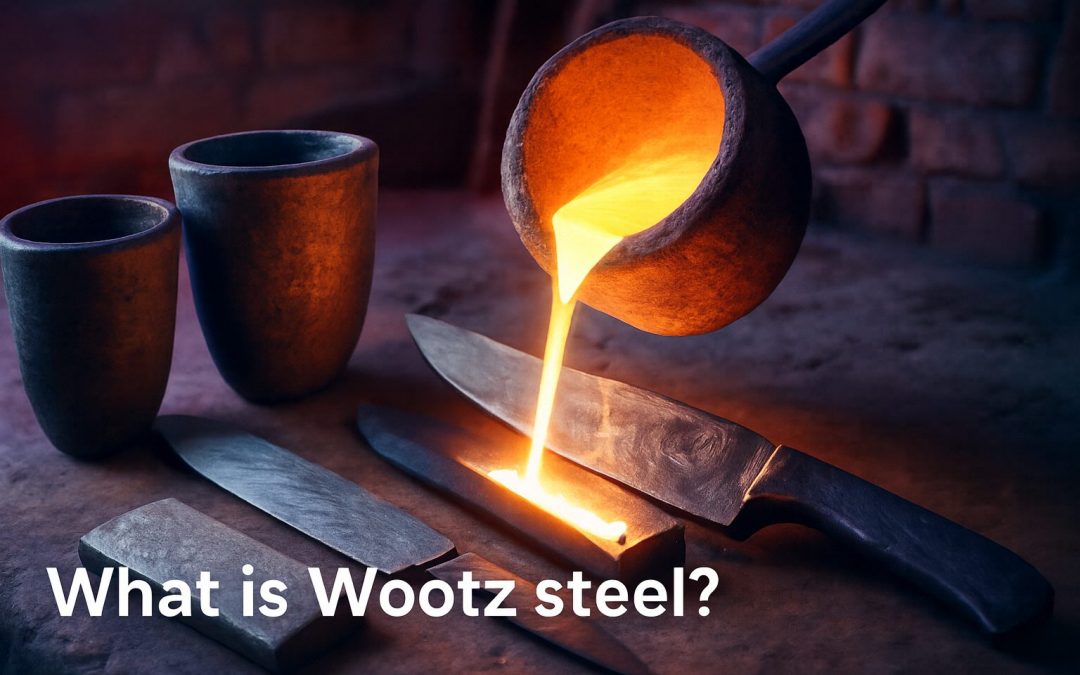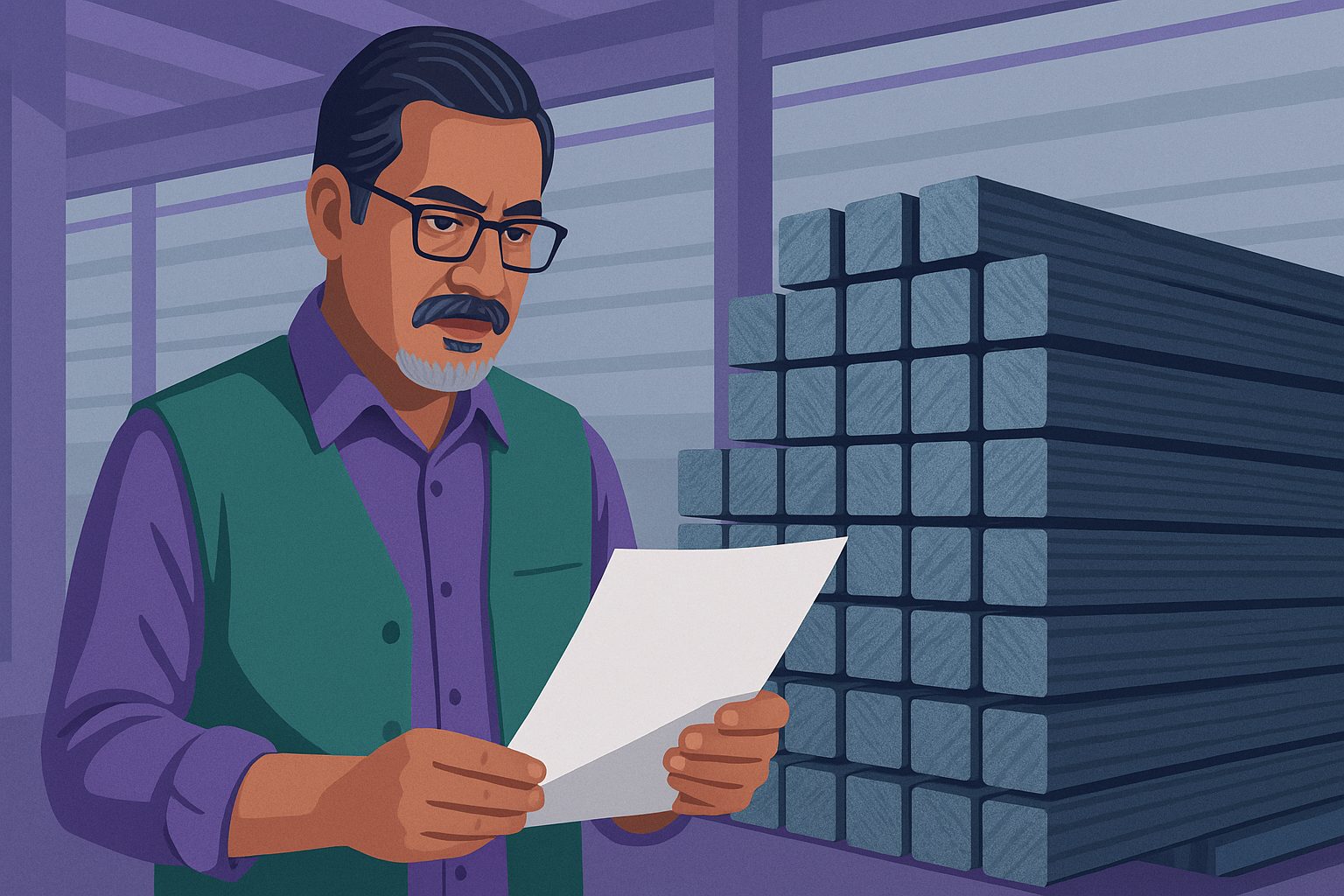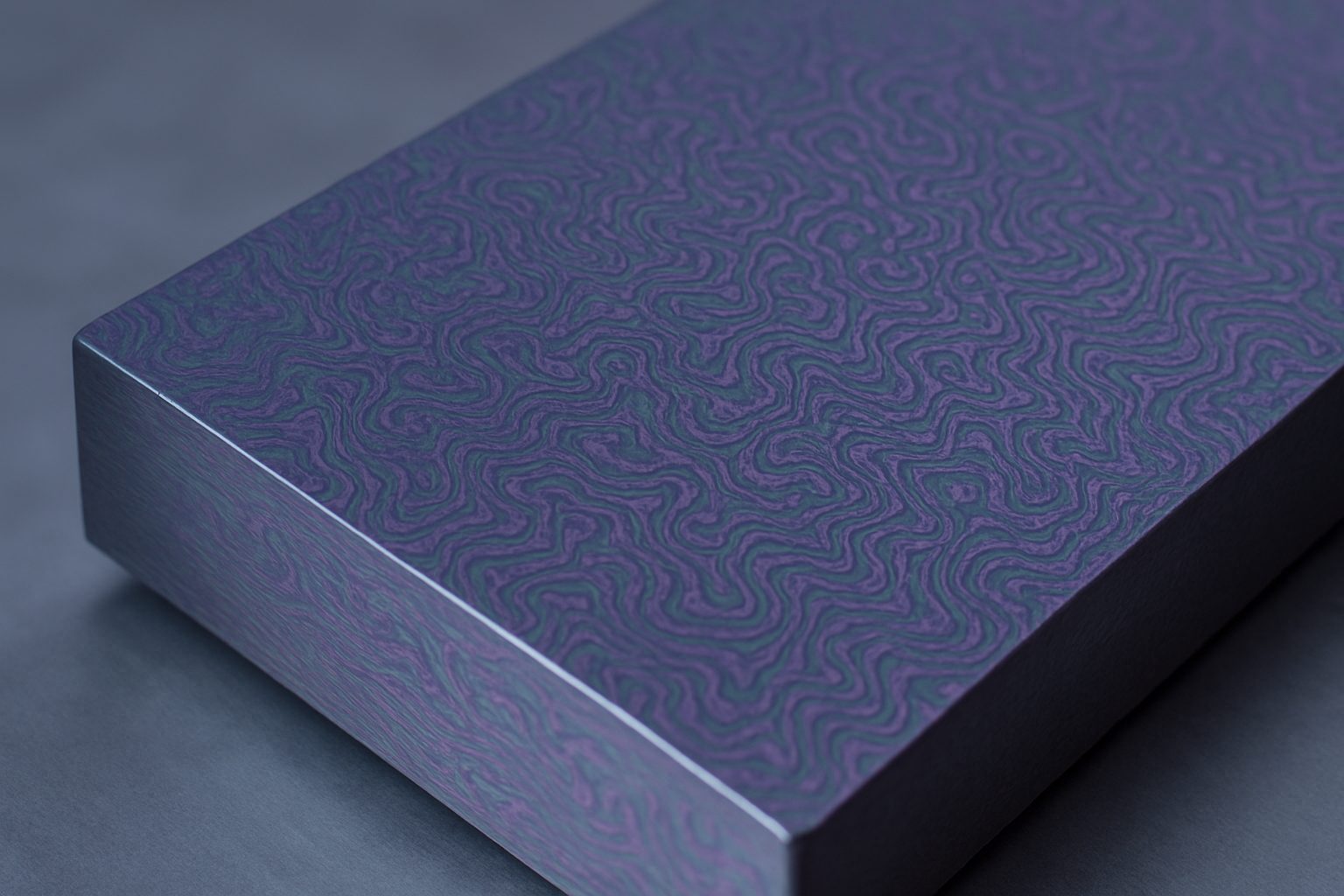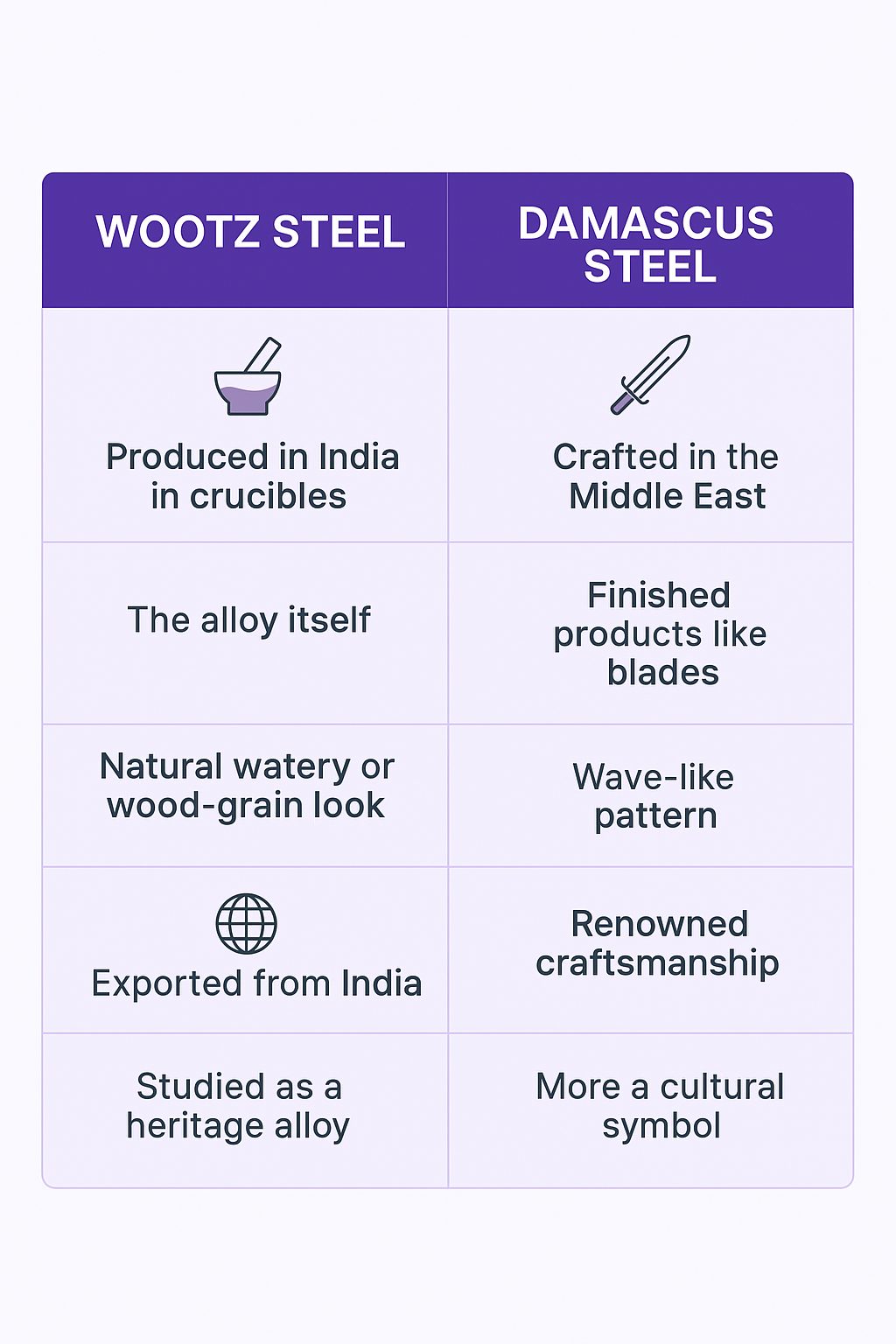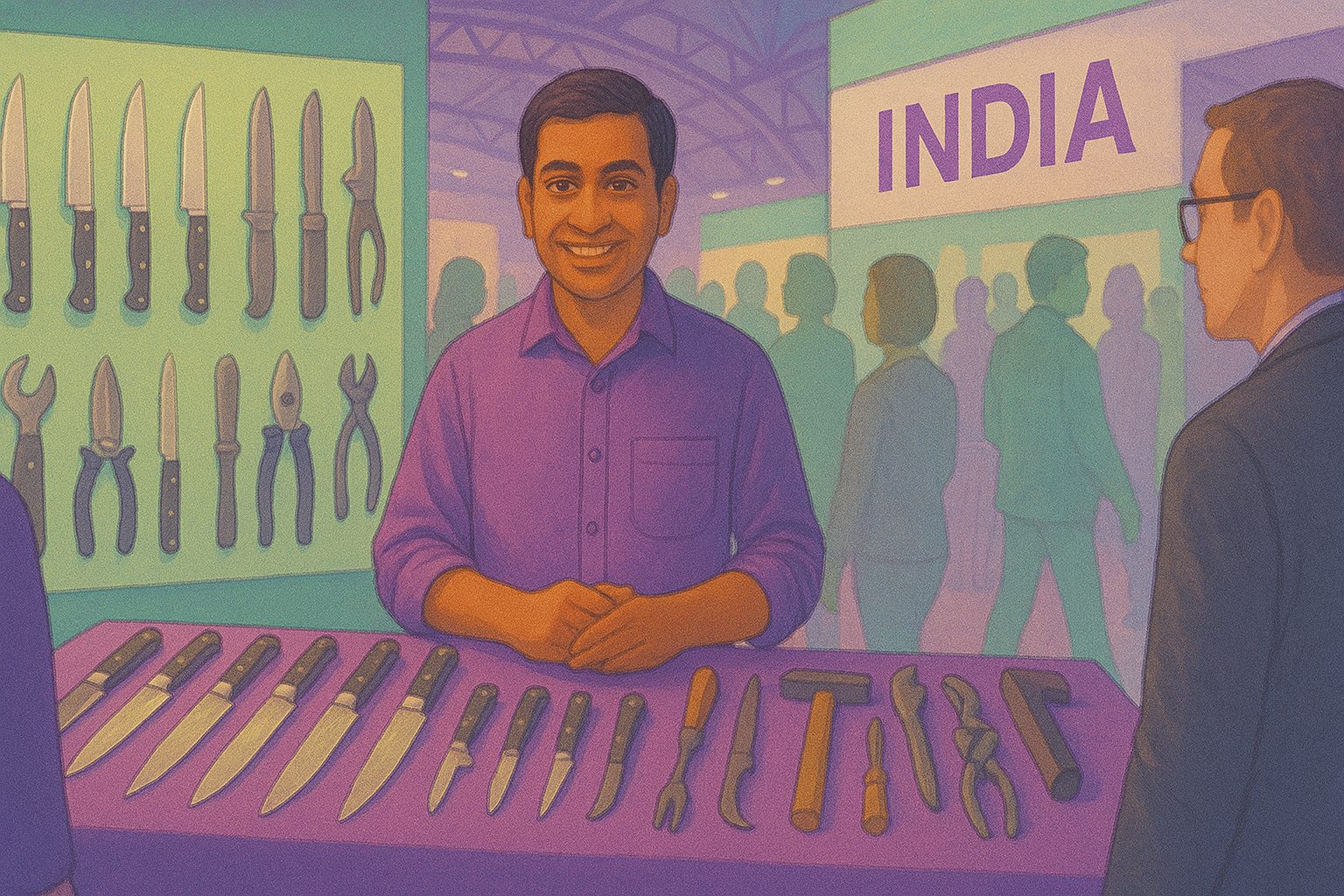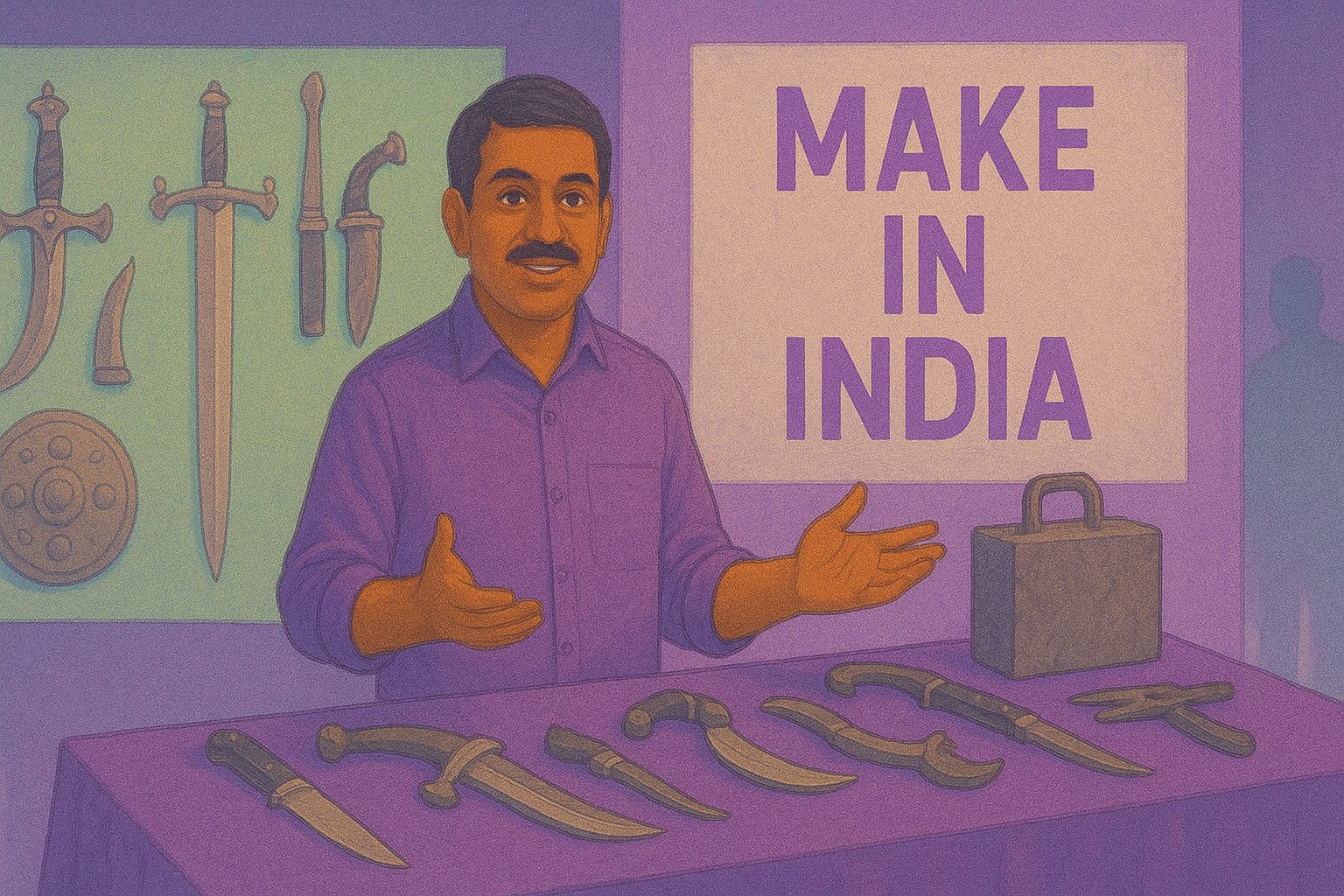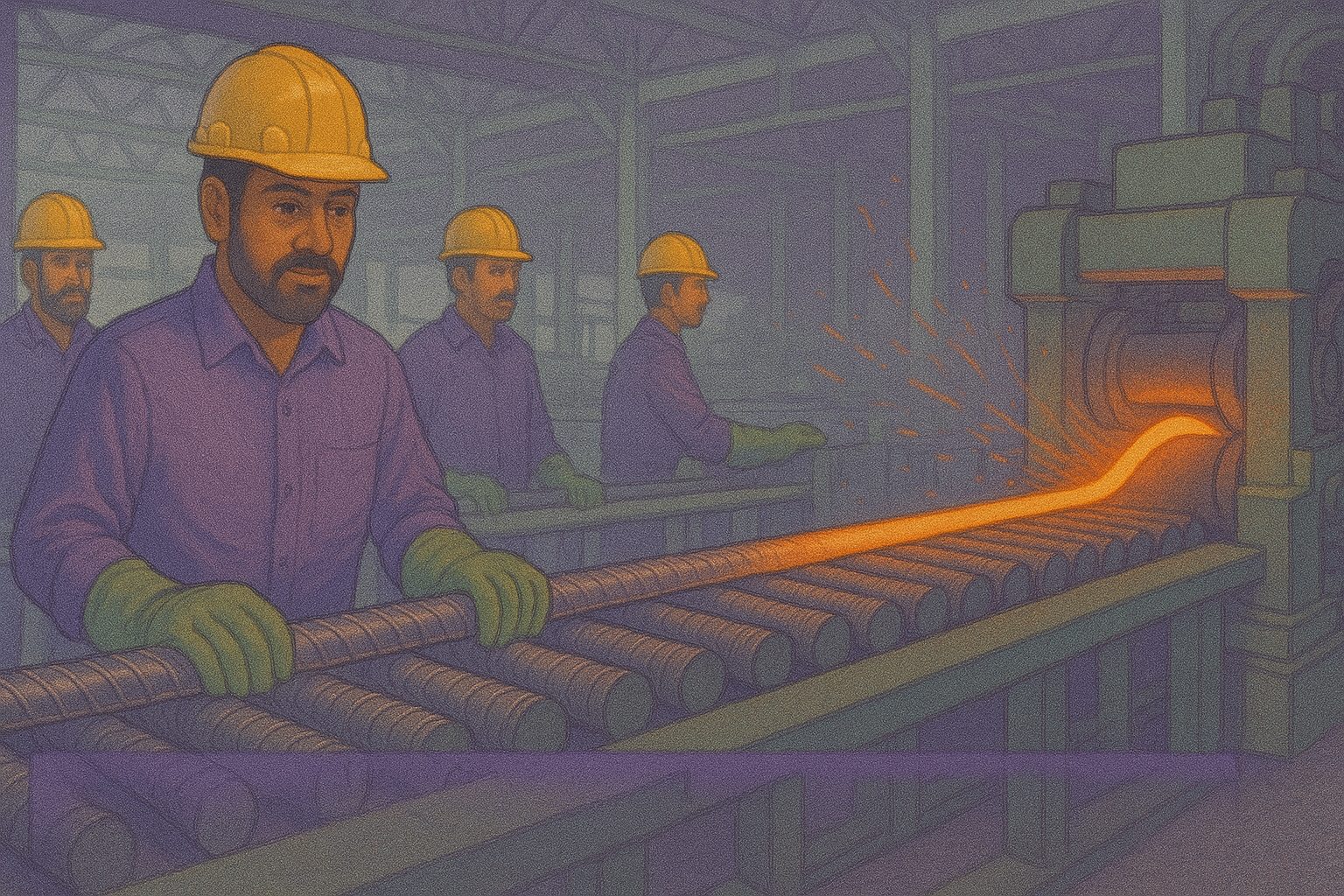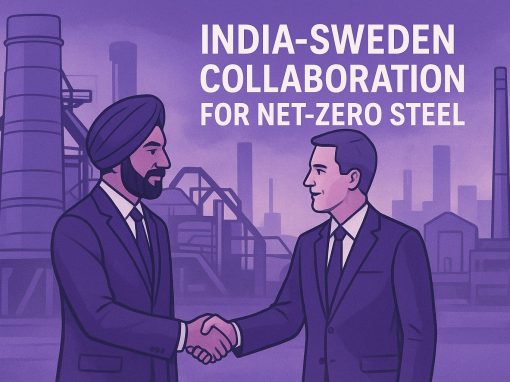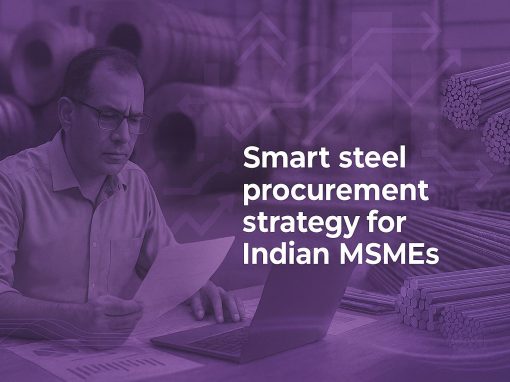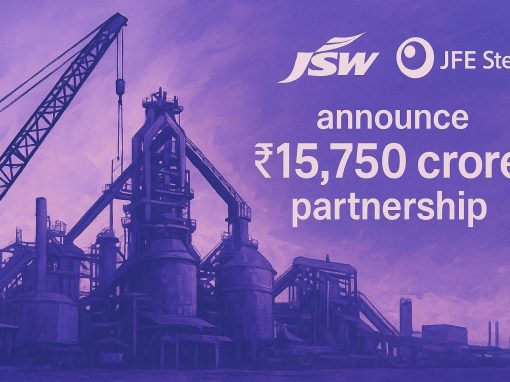Table of Contents
- Introduction
- What is Wootz Steel?
- Wootz Steel vs Damascus Steel
- Benefits of Wootz Steel for Modern Use
- Applications and Opportunities for Indian MSMEs
- How Can MSMEs Leverage Government Schemes
- Why Did Wootz Disappear, and What’s Replacing It
- About Green Steel – Is It Changing the Game?
- Wootz vs Modern Steels vs Green Steel Comparison
- Conclusion
- FAQs
Introduction
Think about it, what made wootz steel one of India’s earliest contributions to world metallurgy? And why should even MSMEs look at it today?
Produced in crucibles with a high carbon mix, wootz was known for its strength and ability to hold a sharp edge. And when talk of small and medium-scale businesses, the scope lies less in nostalgia and more in practical interest. These heritage-linked alloys find demand in artisan tools, niche exports, and premium craft segments. Said this, concerns like sourcing, cost, certification, compliance, etc. decide whether it has space in the modern supply chain or not.
So, what exactly is wootz steel and what makes it different from other types of steel? Let’s have a look at in detail and also understand how MSMEs deal with it today.
What is wootz steel?
Wootz steel is a type of crucible steel first produced in India about 2,000 years ago or more. Basically, small pieces of iron were melted with carbon-rich materials (e.g., wood or leaves), inside sealed clay crucibles. This process allowed carbon to diffuse into the metal, thus, creating a steel alloy that was harder and stronger than ordinary iron.
As per the some ancient records, it can be said that that traders carried wootz ingots to the Middle East and Europe. After that, it gained fame for making swords and tools that could hold a sharp edge far longer than others of its time.
Wootz steel became widely popular and was even linked with Damascus blades, although the two are not the same.
Properties and characteristics
At its core, wootz steel was known for its unusual mix of hardness and resilience.
- High carbon content (1–2%) gave it superior strength compared to ordinary iron.
- Sharp edge retention helps make it ideal for blades and precision tools.
- Distinctive surface patterns come naturally when forged (a metal forging process that involves shaping of metal objects), often seen as watery or wood-grain-like.
- Consistency in its performance was also remarkable for its time. Hence, making it highly searched for in trade.
- Advanced metallurgy meant it displayed qualities which modern steels still aim to replicate.
Apart from it, due to the purity of composition, wootz steel also resists rusting. Though its not stainless steel, it is better in corrosion resistance when compared to multiple other early steels.
Wootz steel vs Damascus steel
As discussed above, the unique properties of wootz it might often lead to its association with Damascus steel. However, the two are not the same and for MSMEs, knowing the difference avoids confusion in sourcing or tender documents.
| Aspect | Wootz Steel | Damascus Steel |
| Origin | It was produced in India through crucible methods. | On the contrary, it was crafted in the Middle East using imported wootz ingots. |
| Definition | The alloy itself (raw material) | Finished products, mainly swords and blades |
| Surface Pattern | Natural watery or wood-grain look when forged | Wave-like or patterned designs created during forging |
| Role in Trade | Exported from India across ancient trade routes | Became famous through Middle Eastern craftsmanship |
| Modern Relevance | Studied as a heritage alloy, sometimes revived in niche markets | More a cultural symbol than a material currently produced |
Benefits of wootz steel for modern use
Although being an ancient alloy, this type of material continues to attract attention due to its varied qualities that once made it famous. Let’s find out how businesses can get benefits from this type of steel in niche manufacturing, premium exports, and heritage-linked branding.
- Strength and durability: As wootz steel has high carbon composition, it makes the material unusually tough. And making it suitable for tools, cutting applications, etc.
- Edge retention: This is a feature that still attracts modern metallurgy. Blades made from wootz steel were popularly known to hold sharpness longer than conventional iron.
- Distinctive aesthetics: A unique selling point (USP) of wootz steel is – its surface patterns, which add uniqueness. Therefore, is mostly used in artisan knives, premium cutlery, luxury craft markets, etc.
- Heritage branding: Wootz steel is linked to India’s metallurgical legacy, thus, allows businesses to market products with authenticity. Especially for export buyers who value and consider culture first.
Applications and opportunities for Indian businesses
The commercial use of wootz steel is limited today, yet the opportunities it offers are specific and valuable. And for businesses, the scope lies not in bulk supply chains but in different sectors where heritage, authenticity, and unique performance are required.
Thus if you are a business owner and want to attract premium buyers – you should definitely focus on these niches, which can even help you reach export markets and stand apart from mass-produced goods.
- Artisan toolmaking: Small workshops can make knives, chisels, or cutting tools that combine both functional strength and keep heritage alive.
- Luxury exports: Usually, collectors and premium buyers pay more for heritage-based products/ items, where one can quickly tap new business opportunities.
- Handicrafts & souvenirs: Another great potential for businesses. Wootz-inspired steel adds mesmerising and unique value, that can easily attract tourists to value authentic and story-rich items.
- Research & collaboration: MSMEs can work with labs or universities by supplying samples or joining projects to revive wootz practices.
- Niche markets: Some specialised industries working with high-carbon alloys consider testing it with wootz-style methods as well, when developing prototypes or new products.
How can MSMEs leverage government schemes?
Industries that are linked with heritage often receive policy support in India. Among these, wootz-inspired products also fall under this space.
However, large-scale production is not possible for this, businesses can still benefit by positioning themselves within government-backed initiatives that promote traditional crafts, innovation, and exports. Here’s the list of a few government schemes to have a quick look at:
- Make in India: As per this scheme, it promotes local manufacturing and also help businesses showcase heritage steel products as part of our country’s legacy.
- MSME Ministry support: Schemes including Credit Linked Capital Subsidy (CLCS) or Technology Upgradation can support small units experimenting on advanced or heritage metallurgy.
- Skill development: Government programmes promote traditional craft skills, which can help artisan toolmaking and wootz revival projects.
- Export incentives: Handicrafts and niche metal products can get duty drawbacks or export benefits when presented well.
Why did wootz disappear, and what’s replacing it?
Wootz steel was previously famous for its strength, durability and sharp edge. But its production was slow and costly, and the small crucible batches never met rising demand. As construction and other industry grew, businesses needed steel in large volumes. That said, they require steel with consistent quality and proper certification – something that wootz could never provide.
This is where modern steels took over and changed the game. Mainly, high-tensile steel became the go-to for buildings, contrary to industrial grades, which helped with machines, tools, vehicles, and so on. Apart from it, they can be easily produced at scale, tested for uniform standards, and backed by BIS codes.
For MSMEs, modern steel is the practical choice – it’s cheaper, easier to source, and already compliance-ready.
What about green steel – is it changing the game?
Green steel is gaining momentum globally and within India as well. Traditionally, steelmaking contributes a significant share to greenhouse gas emissions. But that’s changing:
- India’s steel ministry has now formalised green steel classifications, defining clear emissions thresholds.
- Demand for green steel is expected to rise steadily – currently higher priced by a modest margin but projected to become cost-competitive as production scales.
- This shift affects modern steels far more than heritage alloys like wootz. MSMEs using high-tensile steel must now consider carbon intensity in compliance and export strategy.
A quick comparison of Wootz vs Modern steels vs Green steel
| Aspect | Wootz Steel | Modern Steels (e.g., High Tensile, Tool Steels) | Green Steel |
| Origin & Production | Ancient crucible process, small-batch, heritage technique | Mass-produced in integrated and mini-mills with advanced technology | Produced using hydrogen-based or electric arc furnace methods to cut emissions |
| Cost & Scale | High cost, very limited production, not scalable | Economical due to economies of scale, available nationwide | Currently high cost, expected to reduce with adoption and subsidies |
| Consistency & Certification | Variable quality, no BIS/IS certification | IS standards, BIS-certified, widely accepted in tenders | Emerging certifications (aligned with ESG), backed by global policy support |
| Applications | Artisan tools, luxury crafts, niche exports | Construction, infrastructure, manufacturing, bulk procurement | Targeted for green infrastructure, sustainable projects, and ESG-focused buyers |
| Market Relevance | Niche, heritage-driven, low-volume demand | Mainstream, forms the backbone of India’s steel demand | Fast-growing, projected global market size USD 129 billion by 2032 |
Conclusion
Wootz steel tells us where Indian metallurgy began, but it also explains why certain materials vanish. Limited scale and high cost meant it could never match the demand that modern steels fulfil in construction and industry. For MSMEs, that is the real lesson – markets reward scale, consistency, and compliance.
Still, wootz has not lost all meaning. In export crafts and artisan tools, its heritage can command attention if marketed well. But the bigger shift now is not heritage, it is green. Low-carbon steel is moving from research plants into real contracts, and it will shape how buyers view every grade of metal in the coming decade.
MSMEs that find a balance – using modern steels for bulk, exploring wootz for niche value, and watching early opportunities in green steel – will be better placed to compete in a changing market.
Looking to procure steel?
Tata nexarc helps manufacturers, builders and MSMEs source certified steel products, compare prices, and choose the right grade as per IS codes—with complete traceability and procurement confidence.
FAQs
Can wootz steel be supplied in bulk?
How can MSMEs certify wootz-inspired products for tenders?
Is there any government incentives available for businesses working on heritage steel?
Which grades are most used in government tenders?
Is wootz more costly than modern steel?
Can MSMEs export wootz-inspired products?
Will green steel impact on MSME contracts?
What documents are required for supplying modern steel?
Is there any MSME cluster programmes for steel units?
How can MSMEs balance heritage and modern steel?
Charul is a content marketing professional and seasoned content writer who loves writing on various topics with 3 years of experience. At Tata nexarc, it has been 2 years since she is helping business to understand jargon better and deeper to make strategical decisions. While not writing, she loves listing pop music.
